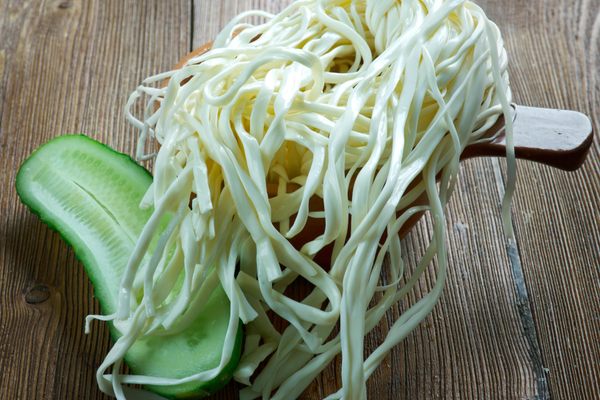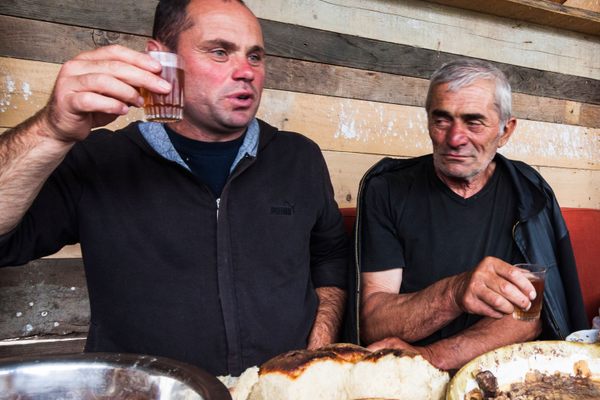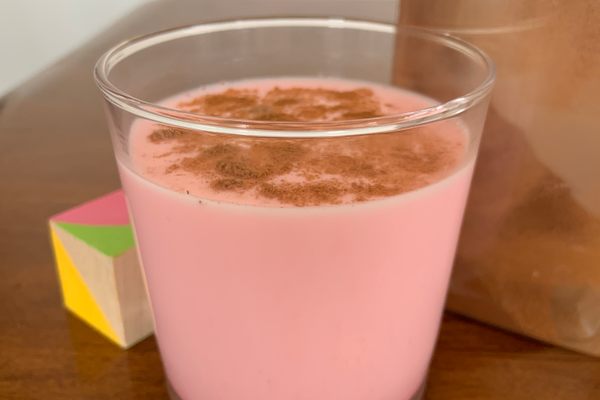The unfamiliar visitor to the Caucasus may not recognize a cluster of warm, jewel-toned churchkhela. An initial glimpse suggests candlesticks or lumpy sausages, not a hanging mass of nuts.
Georgians create these cylindrical candies by threading walnuts, almonds, or hazelnuts—and occasionally fruit such as raisins or dried peaches or plums—along a string. Then, they repeatedly dip the strand in a mixture of concentrated grape juice, sugar, and flour, building up layers of thick, waxy fruit syrup. After about five days of air-drying, the finished product has a lengthy shelf life.
Soldiers relied on sticks of the well-preserved, compact candy when entering battle. The high-calorie treat’s reputation as an energy source earned it the Western nickname “Georgian Snickers bar.” Civilians, however, don’t rely on the sweet for fuel. Instead, it’s a popular holiday snack, enjoyed in slices.
There are a multitude of variations on Georgian churchkhela. Greeks know the treat as soutzoukos. In Armenia, it’s rojik. Turks call the candy cevizli sucuk. Every rendition highlights the region’s natural wealth of grapes and nuts, all compacted into one sugary, dense log.
Where to Try It
-
Dezerter Bazaar
2-4 Abastumani St., Tbilisi, GeorgiaAlso known as the Desertir Market or Dezertirebi Bazroba, this market features stall after stall of fresh produce, nuts, meat, and hanging strands of churchkhela.
-
Troodos Square Market
B8, Troodos, CyprusLots of local sweets are available at this market, in addition to nuts and dried fruits.
Written By
 rachelrummel
rachelrummel
Sources
- www.seriouseats.com/2015/10/introduction-to-georgian-food-must-try-dishes.html
- www.diningchicago.com/blog/2011/03/02/eat-this-rojik-something-sweet-from-armenia/
- www.hellenicaworld.com/Cyprus/Cuisine/en/Soutzoukos.html
- www.georgianjournal.ge/georgian-cuisine/31593-churchkhela-delicious-and-energizing-georgian-snickers.html
- georgianrecipes.net/2013/03/29/chuechkhela-georgian-snickers/
- www.cyprusfoodndrinks.com/cgibin/hweb?-A=1121&-V=authentics
- books.google.com/books?id=NTo6c_PJWRgC&pg=PA310&dq=Cevizli+sucuk&hl=en&sa=X&ved=0ahUKEwjkvsvG1uvYAhUPRN8KHZwRAsEQ6AEIMzAC#v=onepage&q=Cevizli%20sucuk&f=false
- books.google.com/books?id=3akwDwAAQBAJ&pg=PA193&dq=churchkhela&hl=en&sa=X&ved=0ahUKEwiU8ua07OvYAhVHGt8KHc48CbYQ6AEIJzAA#v=onepage&q=churchkhela&f=false
- wander-lush.org/tbilisi-georgia-dezerter-bazaar-food-market-blog/
- culinarymosaic.com/2017/10/05/dezerter-bazaar-in-tbilisi/

















